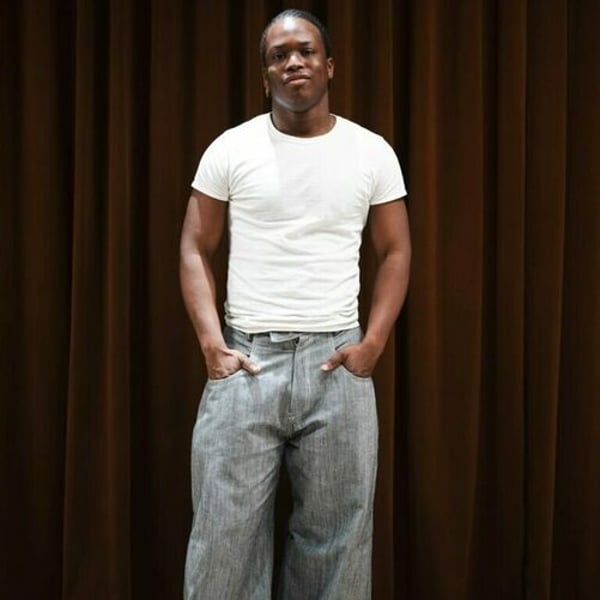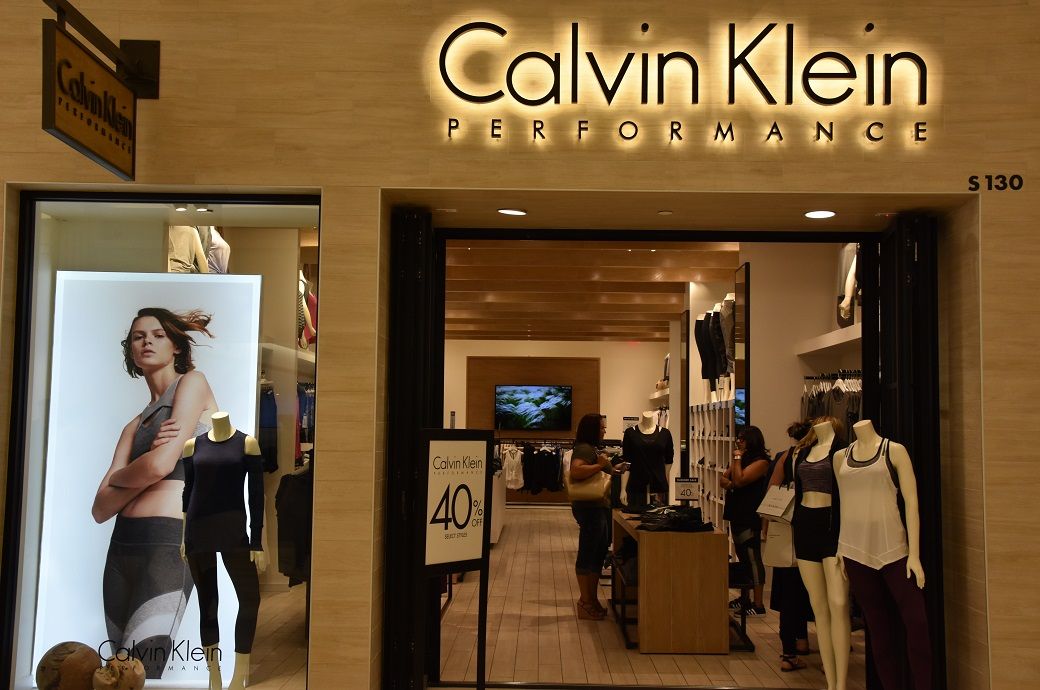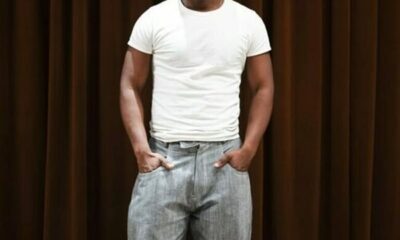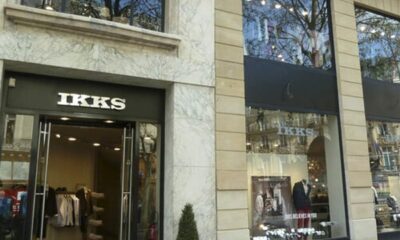Fashion
Zara opens redesigned store at Trafford Centre with modular concept

By
Europa Press
Translated by
Nazia BIBI KEENOO
Published
September 10, 2025
Zara has unveiled its latest store concept at the Trafford Centre shopping center in Manchester (England), characterized by individualized spaces and new technology.
Inditex has reopened this flagship location following a major renovation, expanding the store’s commercial area by 40% to 4,800 square meters. The updated layout reflects the brand’s latest concept focused on personalization and retail innovation.
The store, which offers women’s, men’s, and children’s fashion collections, has also grown its workforce by 40%, now employing 270 people. This reinforces Zara’s commitment to delivering an innovative retail experience that blends fashion, architecture, sustainability, and customer-centric technology into one unified space.
Each section, an autonomous unit
A core feature of the new store is that each section operates as an autonomous unit, using distinct visual cues while maintaining a cohesive design language across the space. The result is a differentiated shopping experience that remains connected to Zara’s broader brand identity. Dedicated areas have also been introduced for perfumes and exclusive product lines such as Zara Origins and Zara Athleticz.
The project, designed by Zara’s in-house architectural team, organizes the store as a series of interconnected rooms, each with a refreshed layout, updated displays, and a refined, immersive atmosphere.

“The space is conceived as a neutral container, layered with modular and lightweight architectural elements, configuring each section as an independent unit within the whole,” the company explained. This concept was developed based on customer research, aiming to highlight the uniqueness of each room while maintaining an overarching narrative. Flexibility and rapid adaptability are key to the design.
Furniture also plays a strategic role in these boutique-style spaces. Materials such as wood, steel, ceramic, and marble are mixed to create visual harmony. Dedicated zones highlight footwear, handbags, and lines like Zara Athleticz, with displays positioned to draw visibility from outside the store.
The façade reflects the interior’s layout, dividing the women’s, men’s, children’s, and TRF sections into clearly marked zones with separate entrances and visual treatments—almost as if they were independent stores. Inside, the layout is designed to support seamless navigation across all departments.
“The portico, featuring the main logo, anchors the overall concept and visually unites each section,” Zara added. The brand also debuted a redesigned shopping and returns area aimed at delivering a faster, more personalized customer journey.
New version of the assisted checkouts
The Spanish brand—now celebrating its 50th anniversary—is continuing its push for tech-driven retail innovation. Its goal is to enhance the customer experience while allowing staff to focus more on customer interaction and less on operational tasks.

A key feature is the integration of smart sales tables. These enable customers to place selected items directly on the table and pay using a card or mobile device, streamlining the process. For cash payments, Zara has introduced a new version of assisted checkouts with an upgraded design.
To improve back-end efficiency, the store also incorporates an automated sorting and replenishment system. It processes both fitting room returns and online order returns, automatically identifying each item and redirecting it to its proper section for restocking.
Additionally, the Manchester location is piloting a project that utilizes this automation to expedite the receipt of new merchandise, resulting in faster and more precise restocking.
This article is an automatic translation.
Click here to read the original article.
Copyright © 2025 Europa Press. Está expresamente prohibida la redistribución y la redifusión de todo o parte de los contenidos de esta web sin su previo y expreso consentimiento.
Fashion
Daveed Baptiste wins 2025 Empowered Vision Award

Published
December 14, 2025
Designer Daveed Baptiste has been named the recipient of the 2025 Empowered Vision Award, presented by The Andréa W. and Kenneth C. Frazier Family Foundation in partnership with the Council of Fashion Designers of America (CFDA).
The announcement was made Thursday evening at a cocktail reception at the W Union Square in New York City, where artistic director and cultural advocate Edward Buchanan and supermodel Imaan Hammam revealed Baptiste as this year’s honouree. The event drew members of the fashion industry, media, and design community to celebrate the award’s mission of supporting and elevating Black designers.
“Daveed Baptiste ultimately distinguished themselves through clear, thoughtful storytelling and a disciplined, vulnerable approach to building and strengthening their tools to lead a business,” said Milton Dixon III, program director of the Empowered Vision Award.
“We’re proud to support a designer whose work speaks to the future of fashion, and we’re excited to move forward with them over the next year of mentorship and continued investment.”
The Empowered Vision Award includes a $100,000 financial grant, along with a year-long mentorship program valued at an additional $100,000. The initiative is designed to provide emerging Black designers with critical funding, industry guidance, and strategic support to help scale their businesses and build a global presence
Copyright © 2025 FashionNetwork.com All rights reserved.
Fashion
US textile imports steady as Cambodia, Bangladesh gain market share

China retained its position as the largest supplier with a **.** per cent market share, followed by Vietnam at **.** per cent. However, China’s share continued to slide month after month, reflecting a structural shift in sourcing. American buyers are increasingly diversifying towards Southeast and South Asia to reduce tariff exposure, mitigate geopolitical risk, counter rising production and labour costs, and build more resilient supply chains.
During January–September ****, apparel imports—the dominant product category—rose by *.** per cent to $**.*** billion, compared with $**.*** billion in the corresponding period of ****. In contrast, non-apparel imports fell by *.** per cent to $**.*** billion, as slower housing activity, cautious consumer spending, and order rationalisation by retailers softened demand for home textiles, industrial textiles, and made-ups.
Fashion
Calvin Klein opens new global flagship store in New York’s SoHo

Located at 530 Broadway in the heart of SoHo, the 3,000+ square foot selling space reaffirms Calvin Klein’s commitment to creating premium lifestyle destinations that marry the brand’s distinctive minimalism with authentic local energy. The store’s design was inspired by New York City’s signature loft apartments, creating a modern, warm environment that evokes the creative legacy of downtown New York and provides an ideal backdrop for the essential denim, underwear and apparel synonymous with the brand – while reinforcing Calvin Klein’s deep roots in the city.
Calvin Klein has opened its new global flagship at 530 Broadway in New York’s SoHo, marking a major brand homecoming and reinforcing its global lifestyle positioning.
The loft-inspired space highlights denim, underwear, apparel and accessories, alongside campaign-driven displays.
A limited-edition Calvin Klein Soho capsule debuts now, with Calvin Klein Collection pieces arriving from Spring 2026.
David Savman, Global Brand President, Calvin Klein said, “We are proud to return to one of the world’s most fashionable cities – and the birthplace of our iconic brand – with an elevated retail expression. This new global flagship, located just steps from our landmark Houston Street billboard, is a tribute to Calvin Klein’s New York heritage. It represents both the evolution of our retail experience and a tangible expression of the world of Calvin Klein. Calvin Klein embodies a distinctive, global way of living that meets culture, and this store is the latest step on our journey of taking our brand to the next level.”
“New York is central to the DNA of the Calvin Klein brand,” said Stefan Larsson, CEO, PVH Corp. “This homecoming is a key milestone as we build Calvin Klein into one of the most desirable lifestyle brands in the world. Step by step, we’re deepening brand relevance, driving consumer engagement and strengthening brand positioning across North America and globally.”
The store showcases Calvin Klein’s lifestyle offering through curated spaces framed against the latest marketing campaigns. Denim and underwear anchor the experience, complemented by men’s and women’s apparel and accessories to round out the world of Calvin Klein. Key styles from Calvin Klein Collection, the pinnacle expression of the brand, will be available during designated times beginning in Spring 2026. As part of the opening, the store will house a limited-edition capsule featuring tees, fleece sweatshirts, hats and totes emblazoned with custom Calvin Klein Soho branding in navy, cobalt, grey and white colorways.
Note: The headline, insights, and image of this press release may have been refined by the Fibre2Fashion staff; the rest of the content remains unchanged.
Fibre2Fashion News Desk (RM)
-

 Politics6 days ago
Politics6 days agoThailand launches air strikes against Cambodian military: army
-

 Tech1 week ago
Tech1 week agoWIRED Roundup: DOGE Isn’t Dead, Facebook Dating Is Real, and Amazon’s AI Ambitions
-

 Politics6 days ago
Politics6 days agoZelenskiy says Ukraine’s peace talks with US constructive but not easy
-

 Fashion6 days ago
Fashion6 days agoGermany’s LuxExperience appoints Francis Belin as new CEO of Mytheresa
-

 Business1 week ago
Business1 week agoNetflix to buy Warner Bros. film and streaming assets in $72 billion deal
-

 Politics1 week ago
Politics1 week ago17 found dead in migrant vessel off Crete: coastguard
-

 Tech1 week ago
Tech1 week agoMIT researchers “speak objects into existence” using AI and robotics
-

 Business4 days ago
Business4 days agoRivian turns to AI, autonomy to woo investors as EV sales stall


















